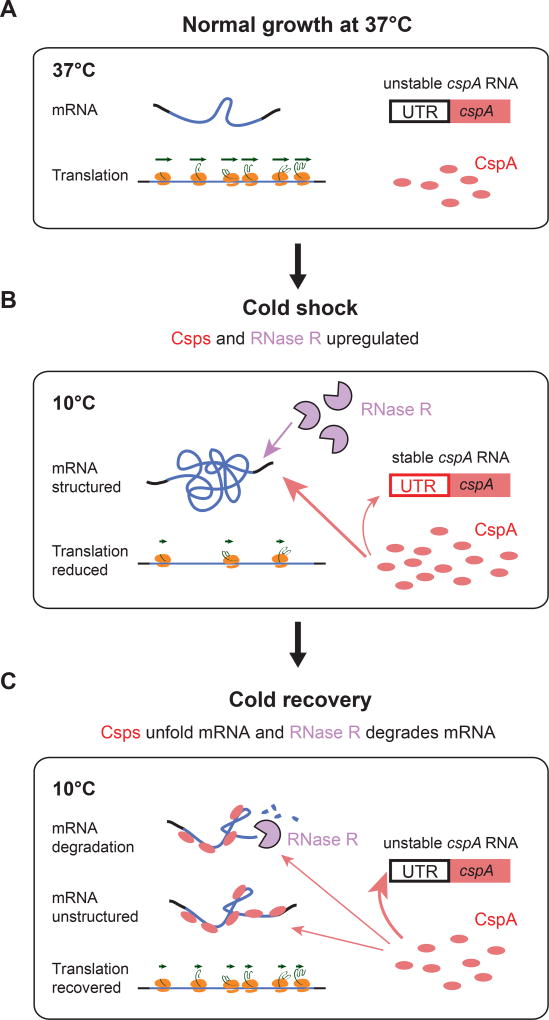Figure 7. An mRNA structure surveillance system mediated by Csps and RNase R is central to translation recovery upon cold shock.
(A) ORF-wide mRNA structure is the strongest predictor of translation efficiency of endogenous genes in vivo during normal growth at 37°C. Orange ovals: transl ating ribosomes; green arrows: elongation rate. The level of CspA (red ovals) is limited by instability of its RNA mediated by its 5’UTR structure (indicated by black rectangle).
(B) Cold shock induces the expression of Csps and RNase R. After cold shock, genome-wide mRNA structure level increases and translation initiation and elongation decrease. The 5’UTR of cspA mRNA undergoes a structural change due to the temperature downshift (indicated by red rectangle), which is critical for increased expression.
(C) During acclimation, cellular translation is recovered via an mRNA structure surveillance system mediated by Csps and RNase R. Early after cold shock, Csps predominantly interact with cellular mRNA as RNA chaperones to decrease mRNA structure level and increase translation globally (B). As recovery proceeds and the Csp concentration increases, Csps bind their own 5’UTRs, triggering a conformational change (indicated by a black rectangle) that leads to decreased expression level. RNase R is required for facilitating degradation of the structured mRNA induced by temperature downshift, assisting Csps function by restoring the appropriate Csp/mRNA balance.

